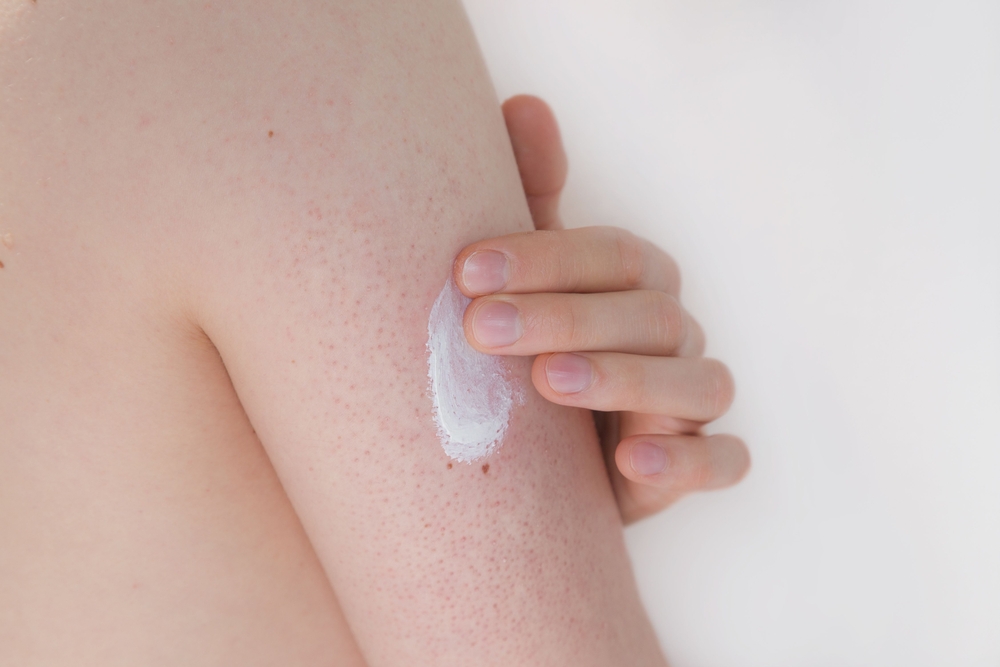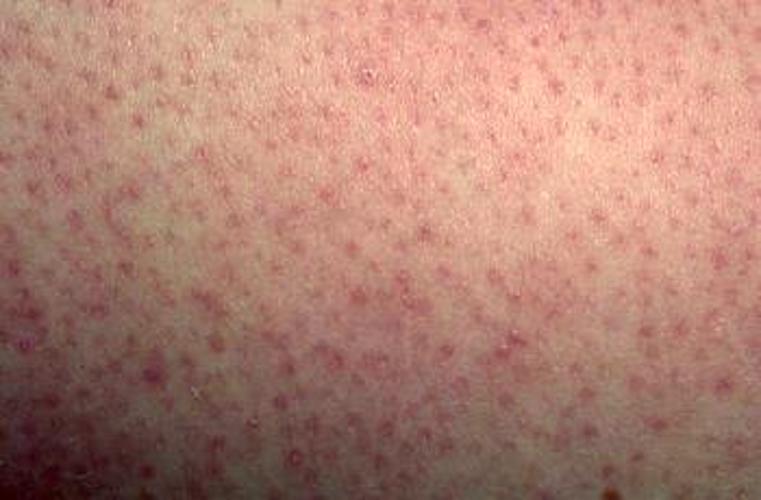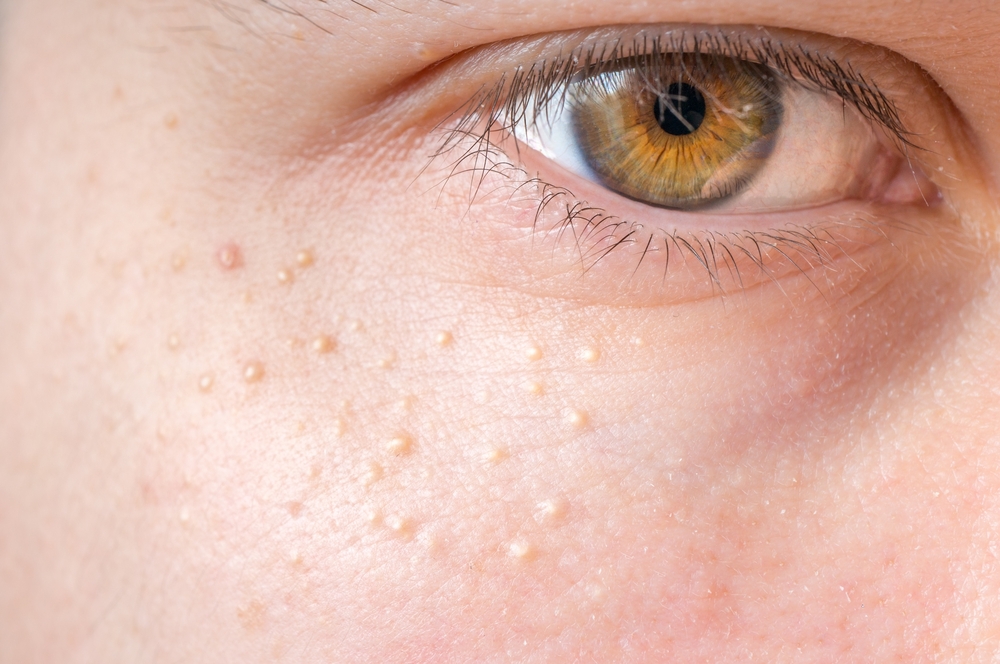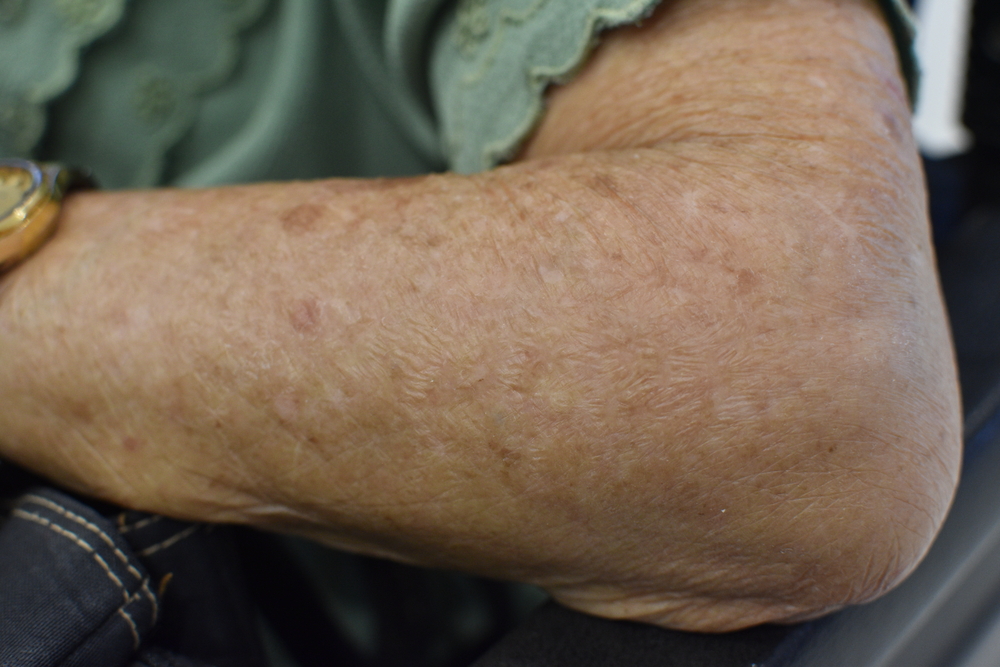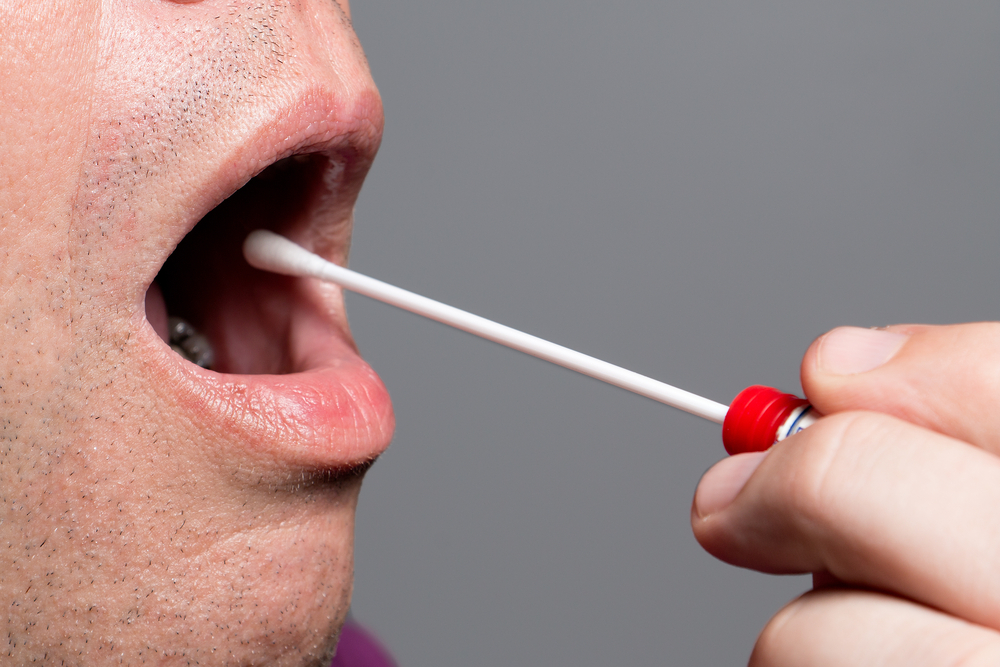- Keratosis pilaris, also known as chicken skin, is a super-common skin condition that affects millions of people every year.
- It’s caused by a buildup of keratin in the body, which clogs the hair follicles and leads to tiny, red bumps on the skin.
- Although chicken skin is harmless, it can affect self-esteem and cause people to feel self-conscious showing their legs, arms or faces.
- Various treatments are available to help get these stubborn bumps under control.
What is keratosis pilaris?
Keratosis pilaris is a common skin condition that affects more than three million people a year and occurs in people with both normal and dry skin. Also called chicken skin, keratosis pilaris causes rough patches and tiny bumps on the upper arms, butt, cheeks and thighs. One way to distinguish chicken skin from other skin problems is that keratosis pilaris bumps usually aren’t itchy or painful.
What causes keratosis pilaris?
Occasionally, the body produces too much keratin and keratin buildup occurs. When there’s too much keratin in your system, it clogs the pores and leads to acne and whiteheads. These clogged hair follicles and pores also trigger keratosis pilaris or fish skin disease (ichthyosis vulgaris).
Your family history may play a role in your likelihood of developing chicken skin, too. The condition is classified as a genetic skin disorder. Interestingly, keratosis pilaris is more common in teens and young adults and tends to disappear by adulthood. However, it may worsen during pregnancy. This is because, during puberty and pregnancy, hormonal imbalances can cause keratin to build up faster. People with chronically dry skin are also more likely to develop the skin condition.
Symptoms of keratosis pilaris
You will notice the following in the affected areas:
- Tiny, sandpaper-like bumps that aren’t painful or itchy
- Dry patches of skin on the thighs, arms, butt or cheeks
- Bumps and dryness that worsen in the winter or in dry conditions
- Occasional redness or swelling
Some people might confuse keratosis pilaris with hives caused by an allergic reaction. Although they might look similar, hives tend to cause itchy skin and require immediate treatment. The disorder is also similar in appearance to other common skin diseases, like rosacea and eczema, but is easier to treat and usually not permanent.
Keratosis pilaris is often closely linked to atopic dermatitis (a chronic inflammatory skin disease) as well as asthma and allergies, and these conditions may occur simultaneously.
>>If you notice lesions with distinctive raised borders, you may be suffering from a rare skin disorder known as Porokeratosis
Keratosis pilaris rubra
A variant of keratosis pilaris is keratosis pilaris rubra, another common condition that causes small, red bumps, especially in young children from birth to 12 years old (“rubra” is the medical term for red). Unlike keratosis pilaris, people with the rubra variety often experience more significant erythema (reddening) and bumpy skin. No one knows exactly why keratin builds up in the skin, but we do know it can have a negative effect on skin cells, leading to this benign condition.
Actinic keratosis
With that being said, there are some situations where red, scaly skin can turn into something more serious. Actinic keratosis, a condition that causes red patches and lesions and looks similar to keratosis pilaris, is one example. This condition is often precancerous, and if left untreated, could turn into skin cancer. Be sure to see your dermatologist if you aren’t sure which condition you have.
Treatments for keratosis pilaris
Once you’ve determined if your condition is, in fact, chicken skin, you want to develop a good system to treat keratosis pilaris.
Lactic acid
Many dermatologists recommend using lactic acid treatments to help ward off dry skin and scaliness. Lactic acid, one of the most popular alpha hydroxy acids (AHAs) in skincare products, is a mild chemical exfoliator often used to help treat acne, wrinkles and signs of aging.
In the case of chicken skin, lactic acid can help break down the keratin buildup causing the pesky bumps. With that being said, lactic acid should be used with caution. This is because it strips the skin cells of valuable protective agents, which in turn can make your skin more susceptible to sun damage. Make sure that you always wear a good quality sunscreen when you use lactic acid or any other AHA in your skincare routine.
Salicylic acid
This acid is often found in acne cleansers and treatments because it has the ability to break down dead skin cells and debris that clog pores, including excess keratin. Your dermatologist might recommend using a gentle salicylic acid cleanser every day to help moisturize, soften and purge the pores. This type of acid, along with lactic acid, will help exfoliate the skin and wash away the keratin that’s become lodged in the follicles.
According to The American Academy of Dermatology (ADA), chicken skin can be treated with salicylic or lactic acid cleansers that contain urea. This organic compound is often added to skincare products in order to help them deliver ingredients deeper into the skin. Salicylic acid and lactic acid are the two most frequently recommended products for treating keratosis pilaris because of their ability to remove dead skin cells.
Moisturizers and creams
One of the most important facets of treating chicken skin is dealing with dead skin cells that build up and lead to itchy and dry skin conditions, including redness and scaling. Using a high quality moisturizer (one with lactic acid or glycolic acid, for example) two or three times a day will help mitigate your symptoms and improve the appearance of your skin. You can also help combat dryness by adding a humidifier to your room while you sleep.
More specialized topical creams are available to treat the underlying cause of the condition. For example, you might use retinol even if your skin is not showing signs of aging. Retinol is essentially just vitamin A, and it has been proven to help unclog pores and enhance collagen production. Dermatologists often recommend prescription strength topical retinoids, such as tretinoin, adapalene and tazarotene, in severe cases.
Steroid treatments
If you’ve tried all of the at-home and over-the-counter remedies out there and have had minimal luck clearing away those annoying red bumps, your doctor may prescribe you a steroid cream. Topical steroids are a good choice for anyone who is in a hurry and wants to address their red bumps before a special occasion or event, as they work quickly. Most dermatologists will prescribe a seven- to 10-day course of medium potency steroids.
Chemical peels
Chemical peels can do wonders for your skin. They work by removing the top layer of the skin and encouraging a quicker cell turnover rate, which improves the production of collagen and elastin. They may also be a good choice for sufferers of keratosis pilaris because they generally use potent alpha hydroxy acids, like lactic acid, to get rid of that stubborn keratin buildup.
Laser treatments
In severe cases of chicken skin, your doctor might recommend a laser treatment. Lasers are used for all kinds of things these days — from removing tattoos to softening the appearance of wrinkles — but they’re also recommended for treating skin conditions like chicken skin and psoriasis. Interestingly, doctors often recommend laser hair removal for treating keratosis pilaris.
If you don’t mind a little bit (or a lot) of hair loss, then this treatment may be a good option to permanently eliminate chicken skin. Why? Because these treatments remove and destroy hair follicles while simultaneously preventing keratin from getting clogged within. When you have no hair follicles, there’s nowhere for the keratin buildup to go, so most people see great results with this treatment.
What’s more, many people experience worsened chicken skin and redness after shaving. When you ditch the razor for laser hair removal, you won’t have to struggle with those little post-shave bumps anymore. The primary downside of laser treatments is that they can be costly and time consuming. Most patients require multiple treatments for ideal results.
Which one is best?
Choosing which chicken skin treatment is best suited to you comes down to your particular scenario and budget. Teenagers and young adults should stick to at-home remedies (especially lactic and salicylic acid treatments coupled with a good moisturizer), as the condition usually clears up on its own by adulthood. If you’re an adult struggling with chronic keratosis pilaris, you should adopt the recommended skincare treatments before considering laser treatments or peels.
The most important thing to do if you think you have keratosis pilaris or another serious skin condition is to talk to your dermatologist about a treatment plan. He or she will be able to make sure that your condition isn’t something more serious and will tailor a care plan based on your particular skin type and budget.





